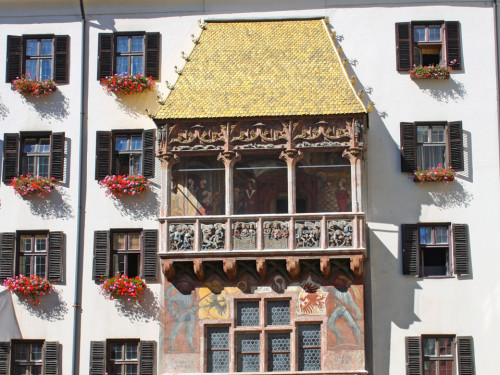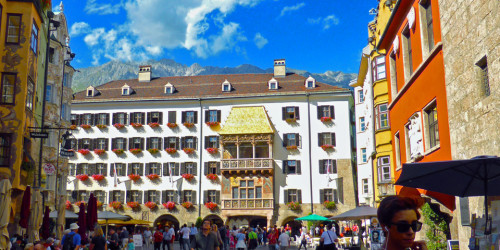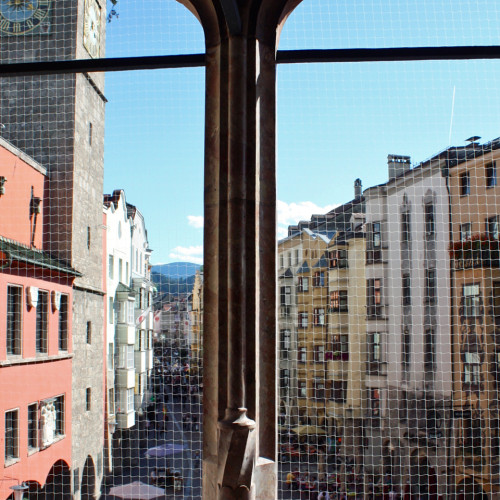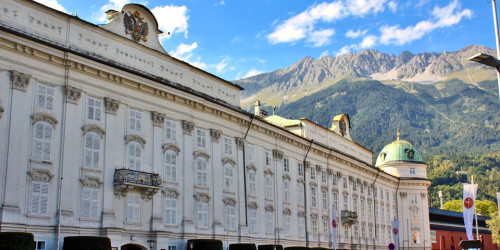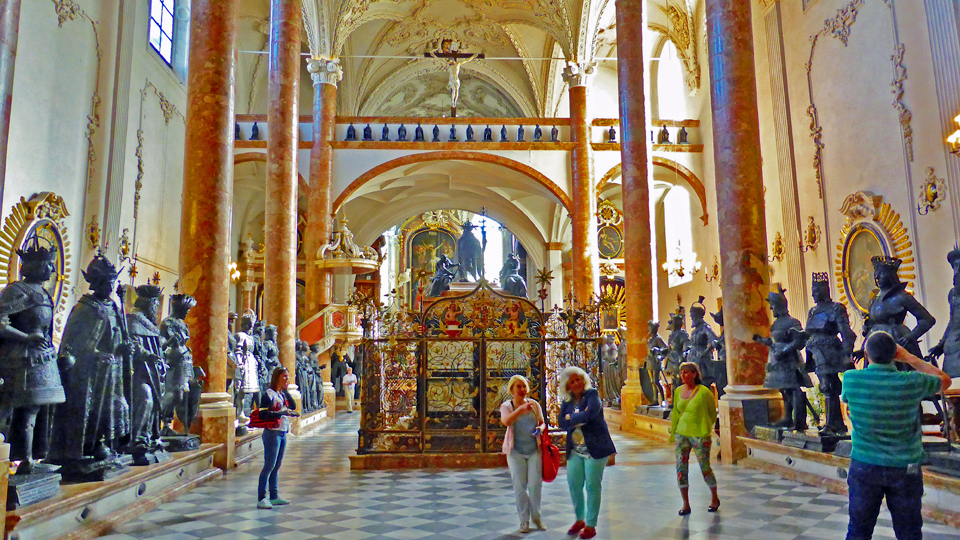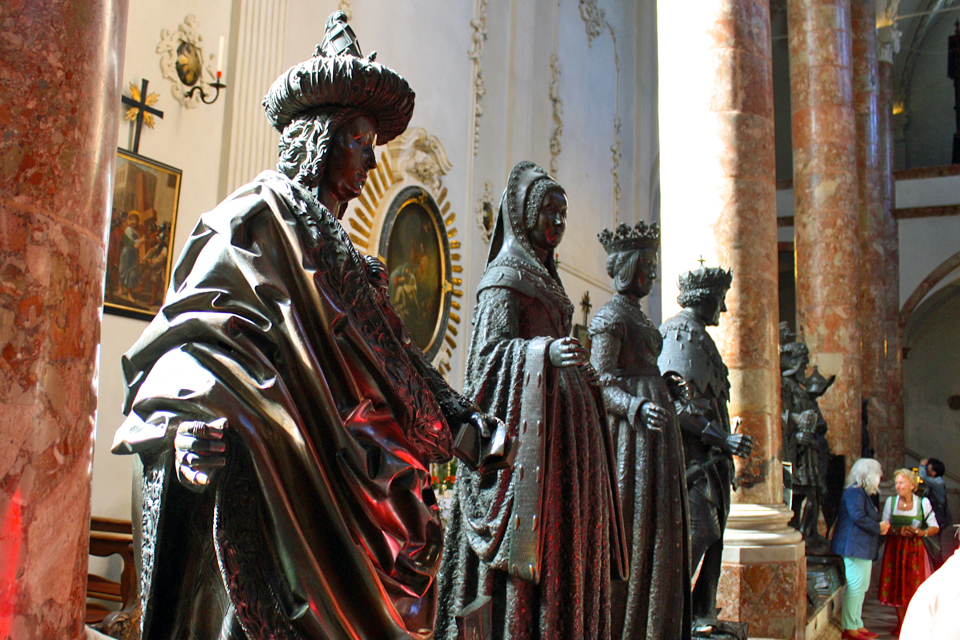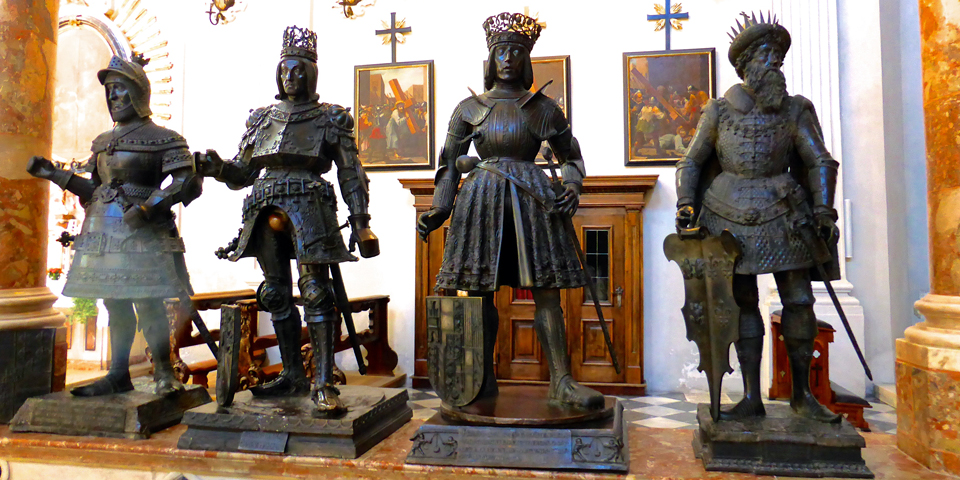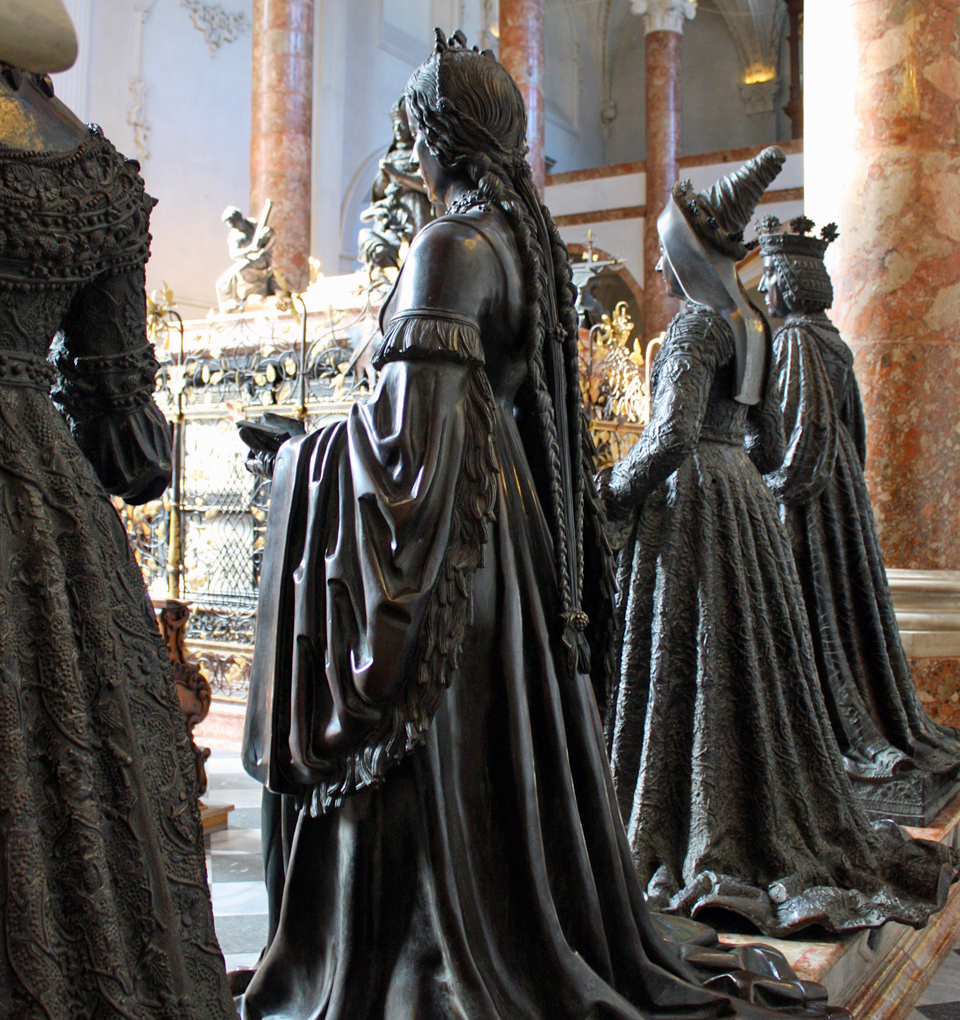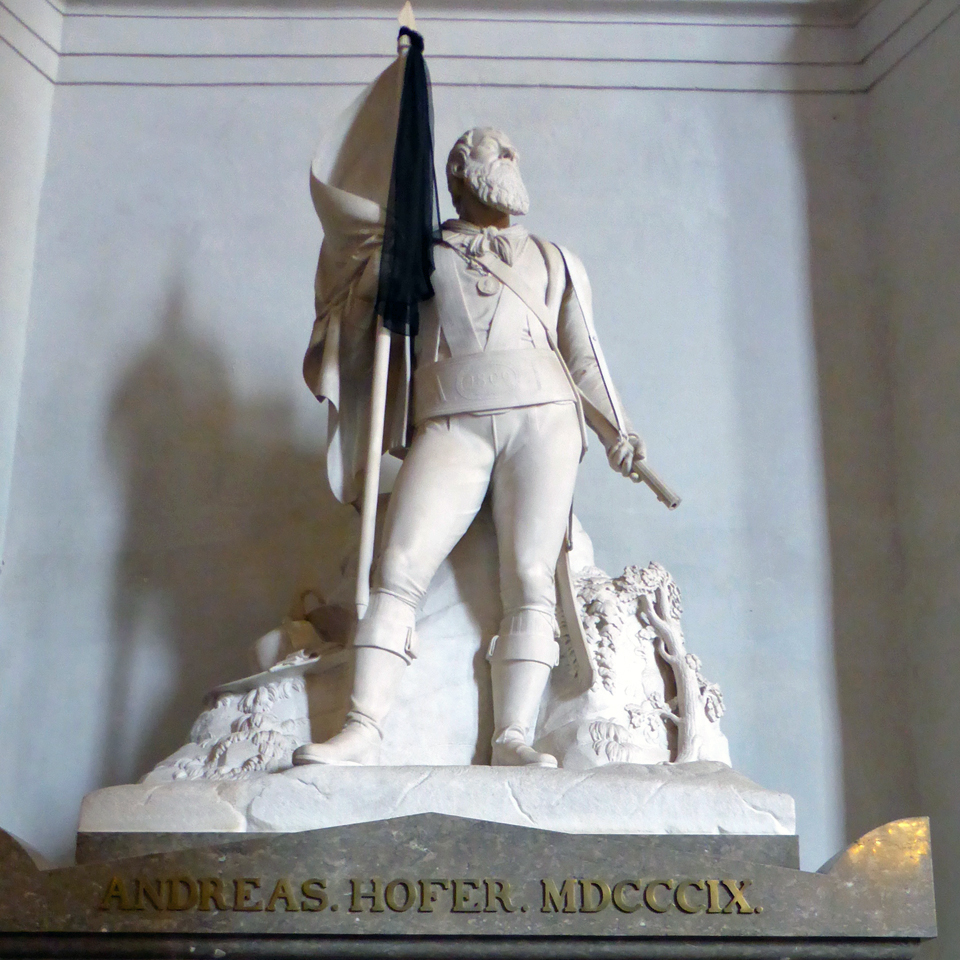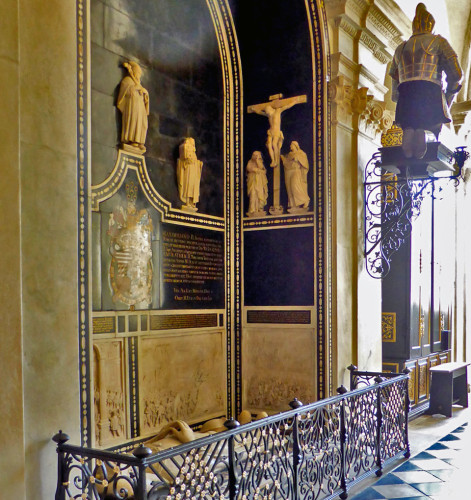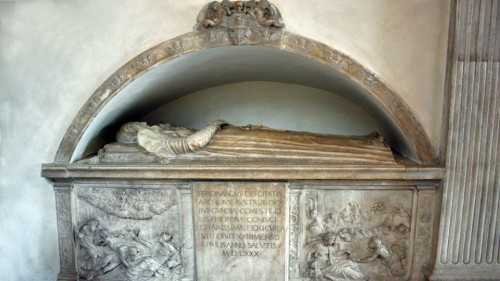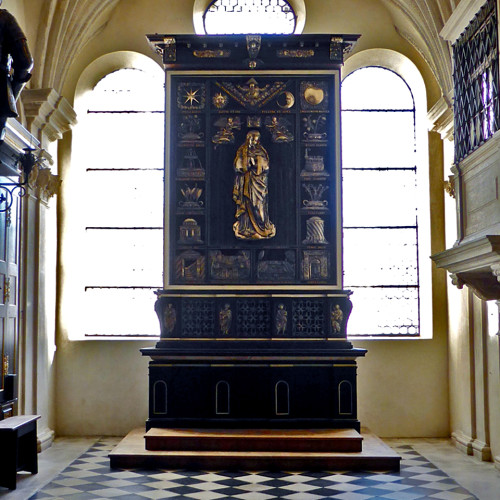Maximilian I lives on in Innsbruck, Austria
The architecture and narrow streets of Innsbruck’s Old Town are reminiscent of fairy tales. The landmark “Goldenes Dachl”, the Golden Roof, is its hub, a symbol of Innsbruck, and a legacy of its political and cultural history.
For centuries, the Habsburg dynasty ruled, or were related by marriage to those who ruled, over the greater part of Europe. The Tirol came under Habsburg control as a bequest in 1363. Maximilian I was crowned as Emperor in Innsbruck in 1508, and was much loved for reforming the corruption and oppressive demands of the nobility.
He remodeled Archduke Frederick IV’s residence and to symbolize his wealth and power capped the roof over the three story oriel window with 2,657 gold-plated copper tiles. He watched the square’s festivities, like the tournaments he so enjoyed, from this royal box.
The box is emblazoned with his image, flanked by that of second wife Bianca Maria Sforza of Milan, a marriage of territorial expansion. On the other side is first wife, Maria of Burgundy, who also inherited vast tracts of land, but who, we were told, was his true love.
Maximilian I’s grandson, Emperor Ferdinand I (1503–1564,) built the Court Church in the Imperial Palace complex with the most magnificent tomb in Europe for his grandfather, Maximilan I, whose remains are in the Castle Chapel at Wiener Neustadt.
The cenotaph is surrounded by twenty-eight meticulously detailed larger-than-lifesize German Renaissance bronze sculptures of family and heroes.
Cenotaph for Maximilian I, Court Church, Hofkirche , in Imperial Palace, Hofburg in Innsbruck, Austria
The tomb of patriot Andreas Hofer, who successfully led battles against the Bavarians, is also in the church.
The Silver Chapel (1758) with its famous organ and silver altar features the tombs of Arch Duke Ferdinand II and his untitled wife, Philippine Welser.
Innsbruck Cards include entrance to Innsbruck’s museums, IVB public transportation — including trams to holiday villages — the Sightseer Hop-on Hop-off bus, a bicycle rental, and the lifts and cable cars around Innsbruck.

